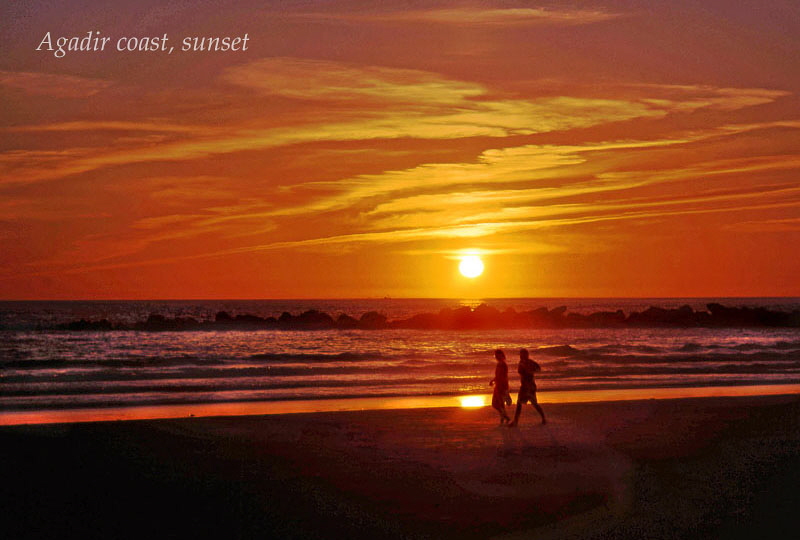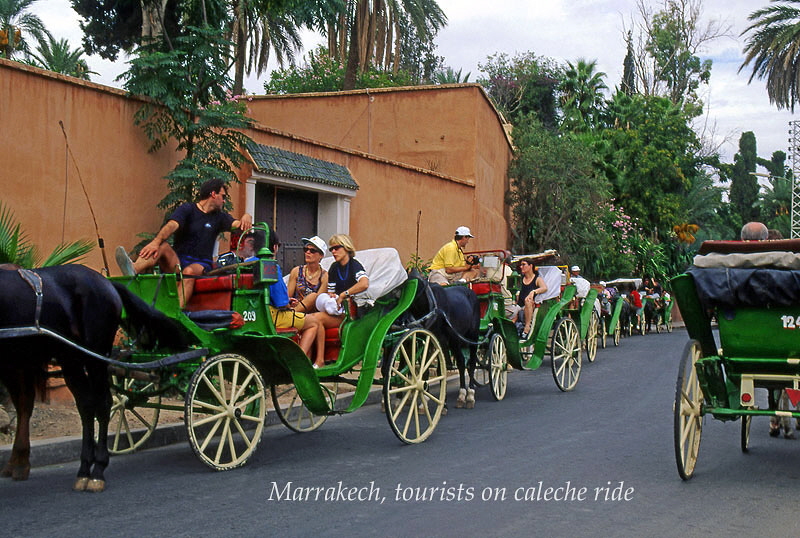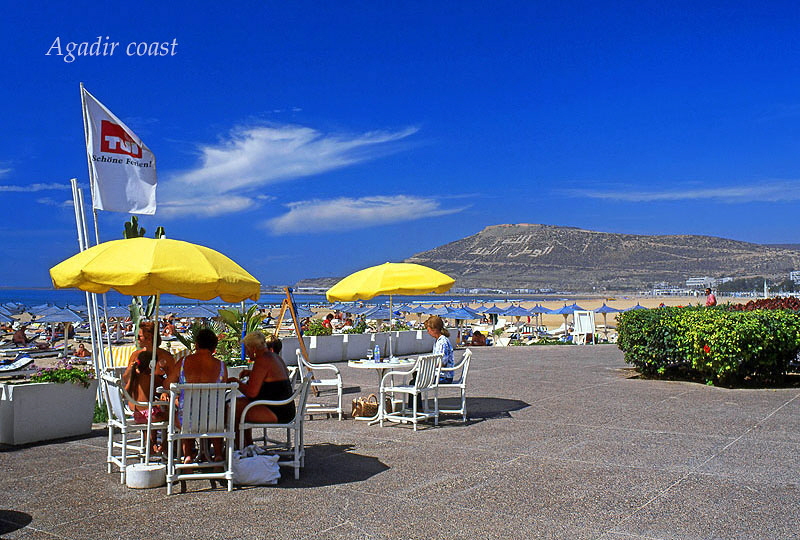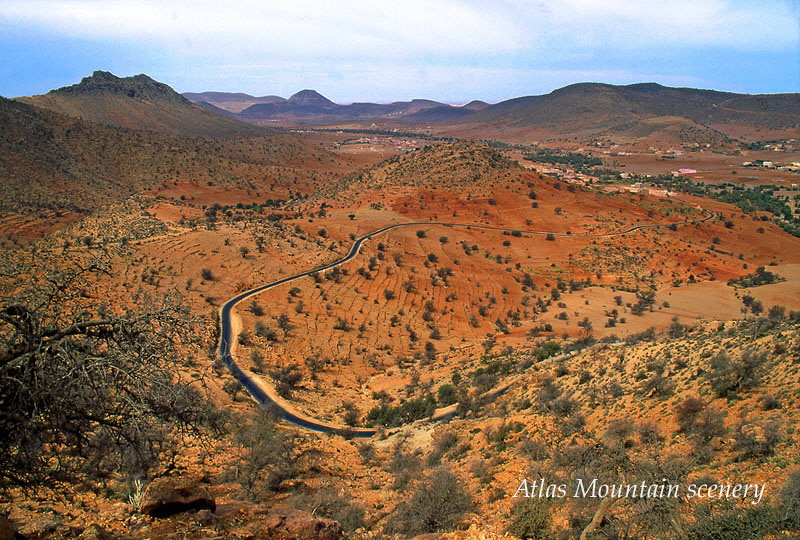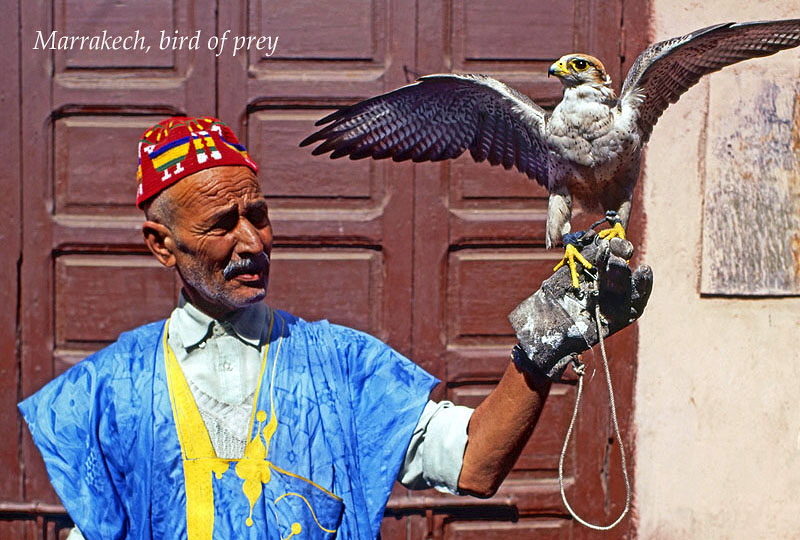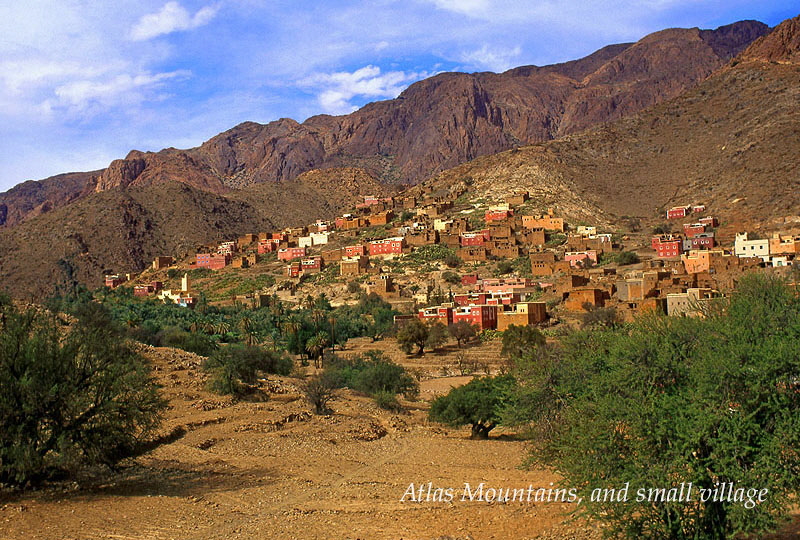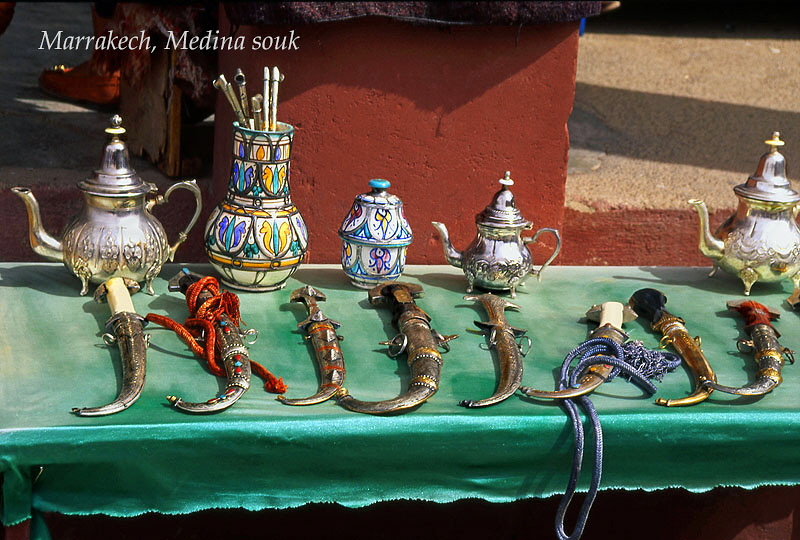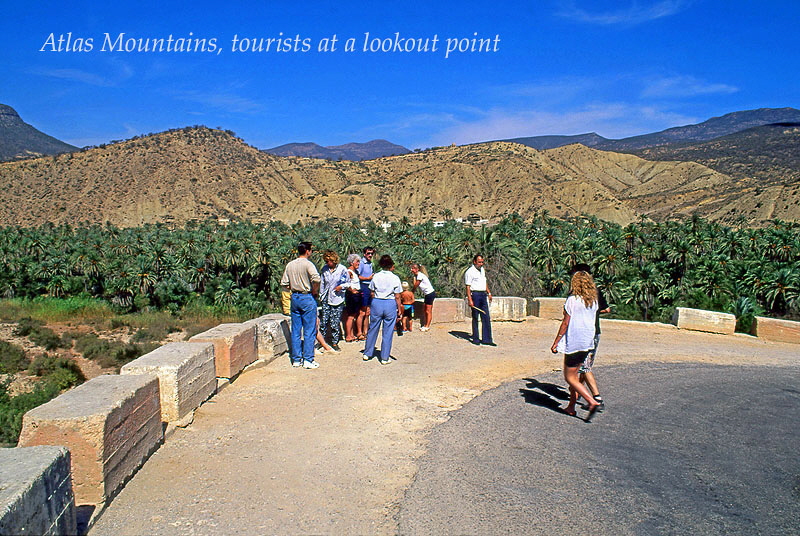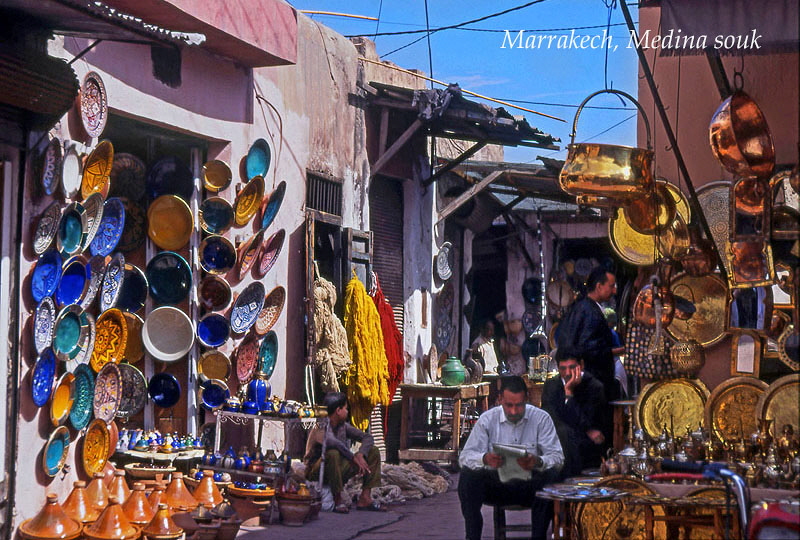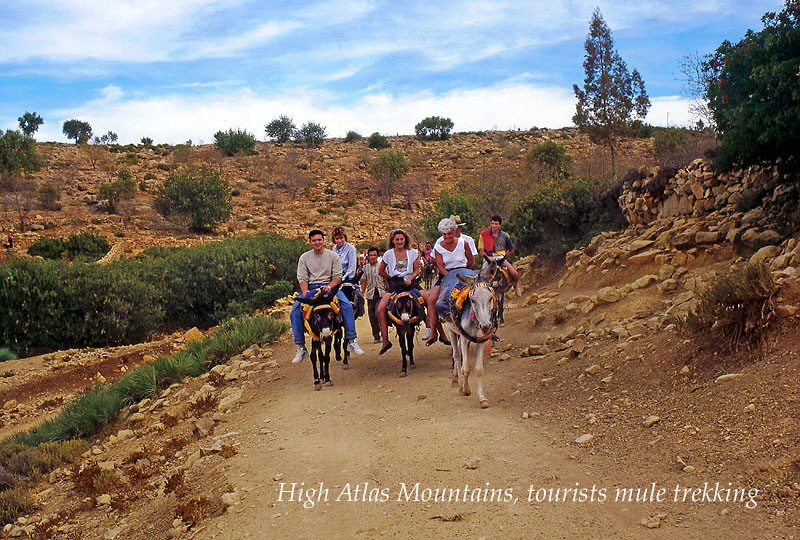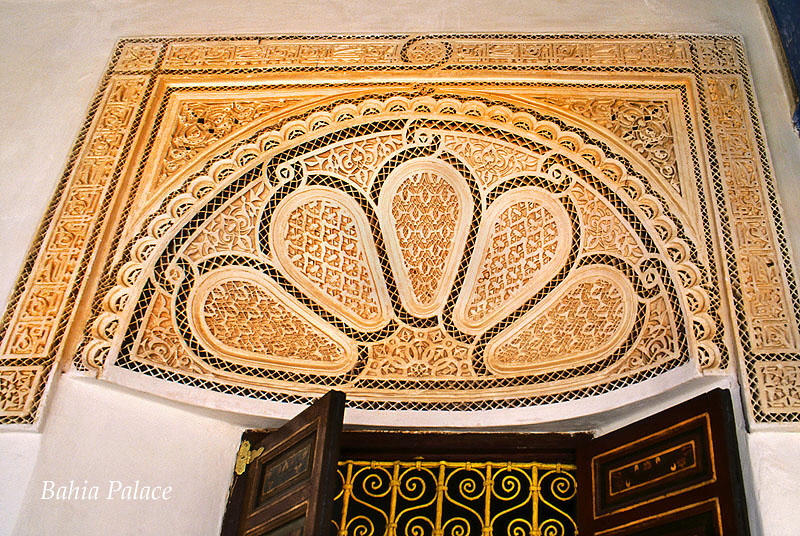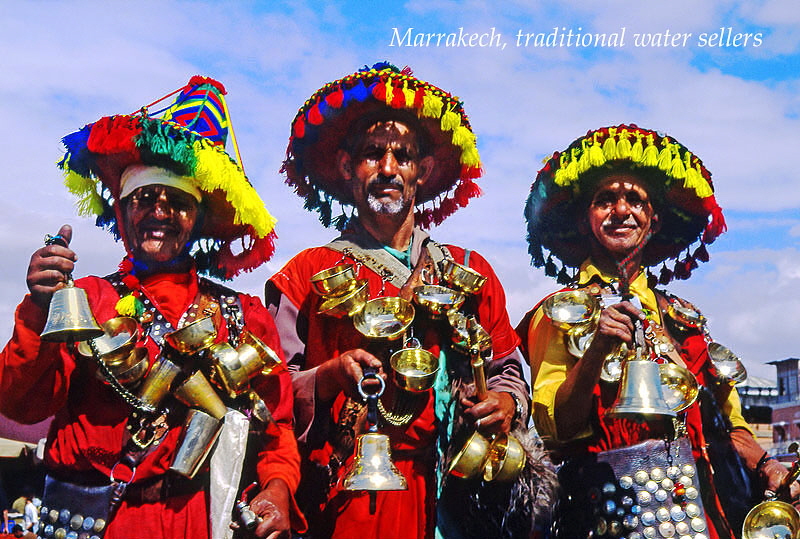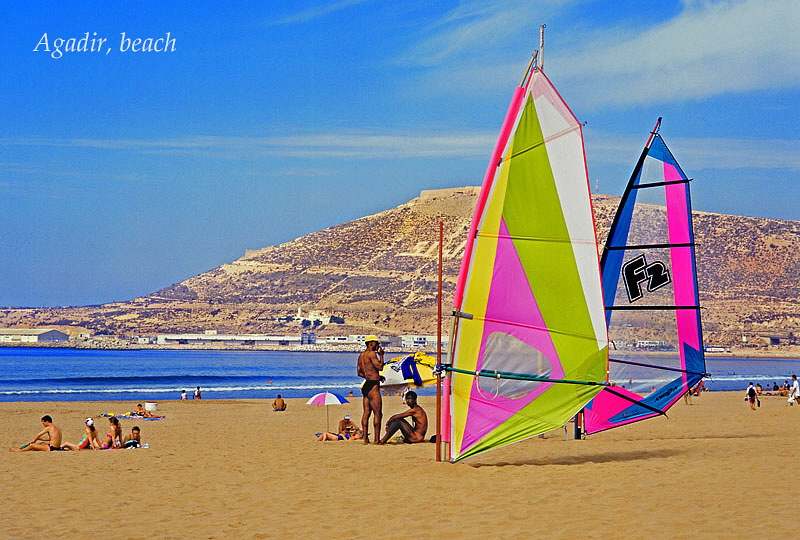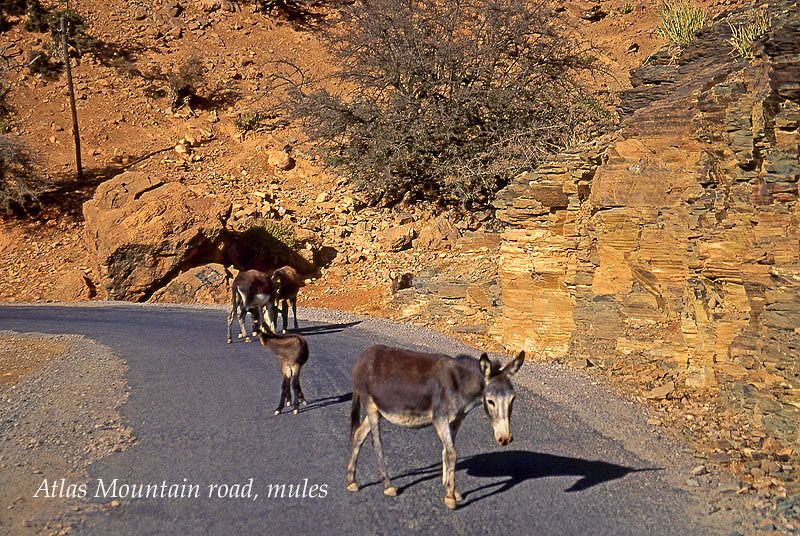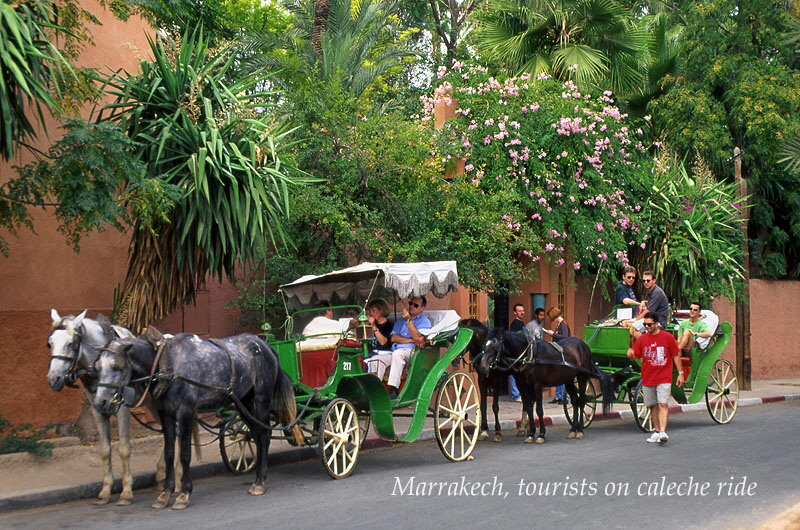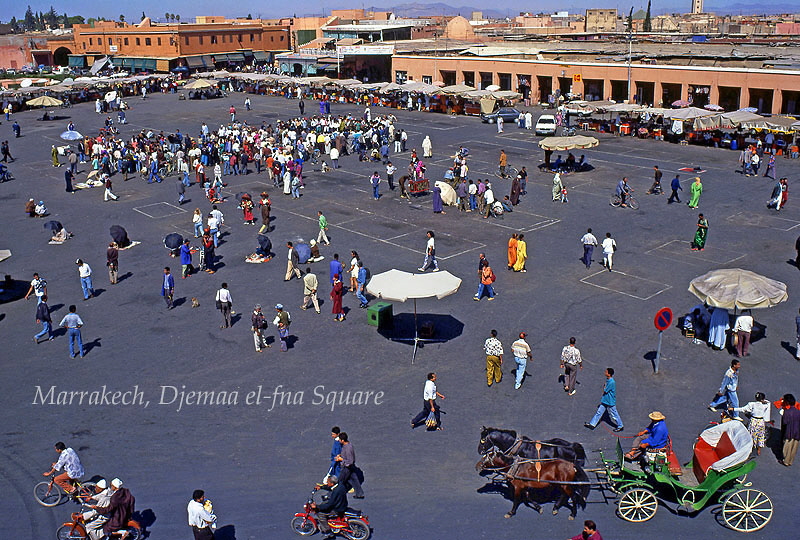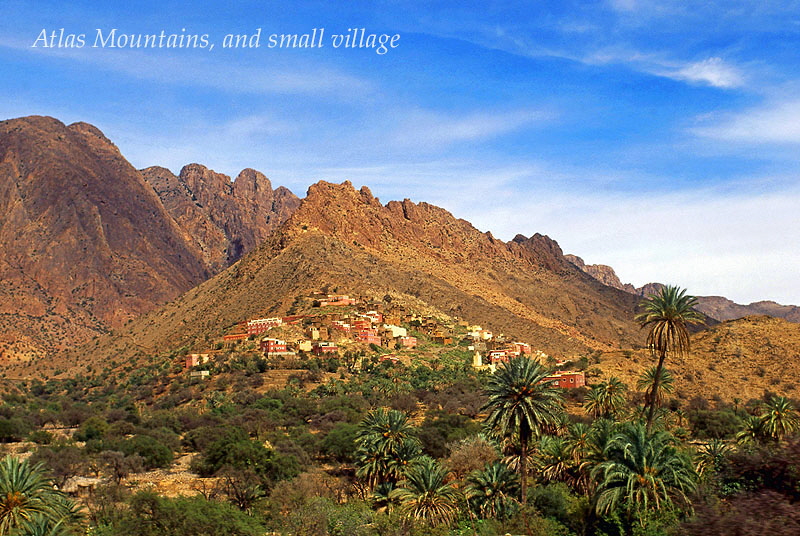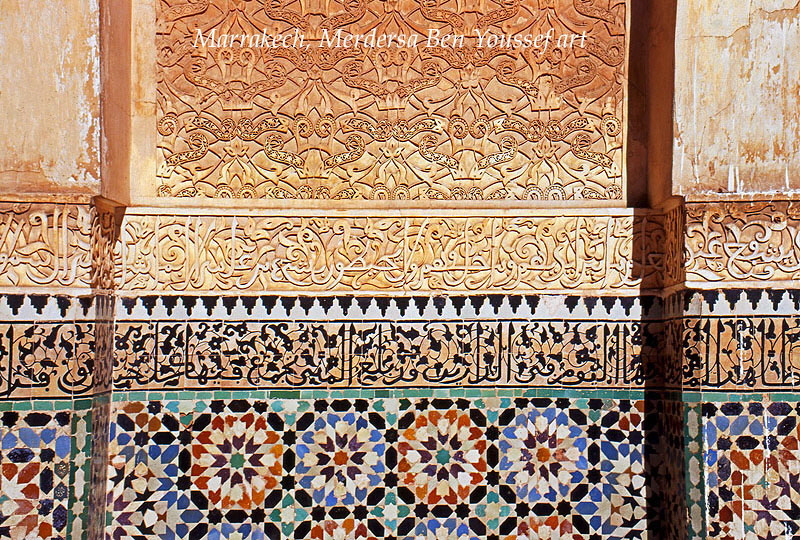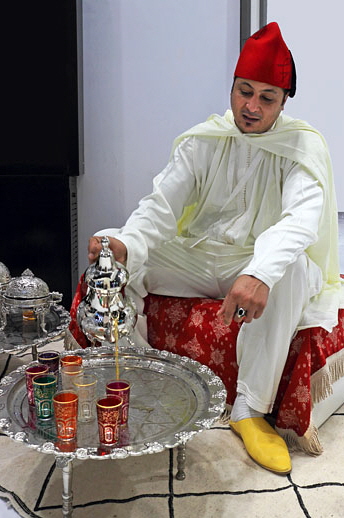
While southern Europe and the Med are popular choices for summer holidays, venturing just a little farther south to Morocco can easily enhance that experience. Boasting of both a Mediterranean and Atlantic coast, it’s not only the sun seekers’ haven but an adventure into North Africa. Despite modernisation, much of its ancient traditions and customs are still retained by the fusion of Arabic, Berber, and European cultures.
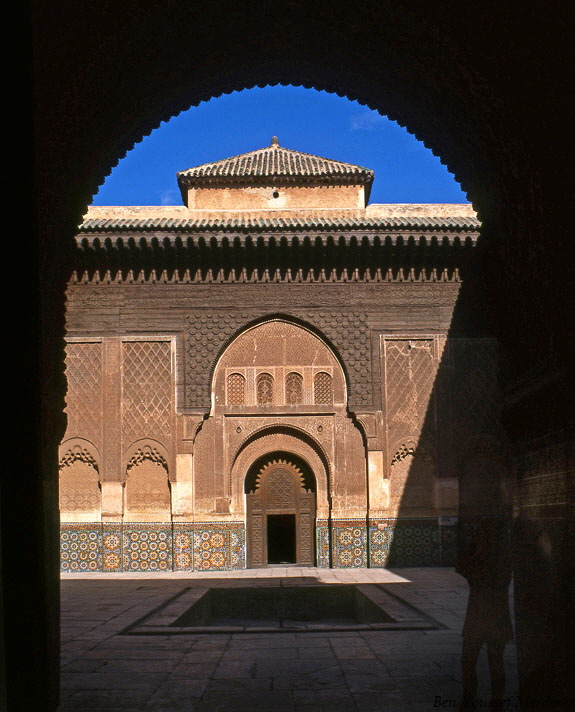
Morocco adds spice to a sunshine holiday
The country’s topography and scenic diversity begin with the golden sandy and rugged coastline, onto Saharan dunes, and reaching the peaks of the Atlas Mountain range. It’s a seductive invitation for the discerning traveller to look beyond just two weeks basking in the sun. There are the dazzling cities like Marrakech, Casablanca, Fez, and the capital Rabat, teeming with historic sites, Islamic architecture, not forgetting vibrant souks.

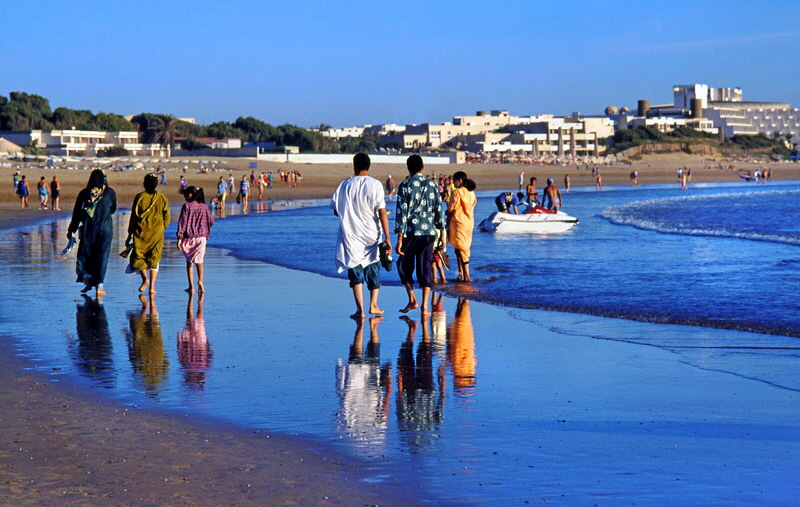
Agadir coast
I chose my two weeks in May, beginning with five days in the city of Marrakech, then onto the coastal town of Agadir, and from there exploring the Atlas Mountain range.
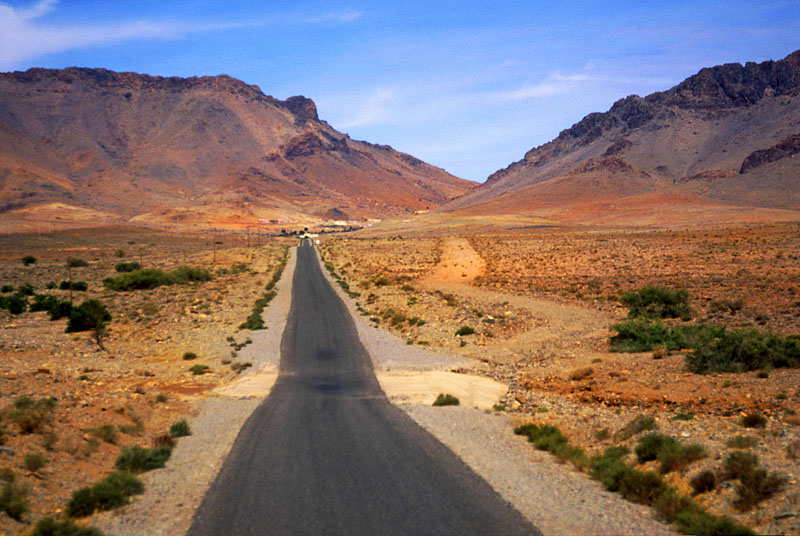
Road to Atlas Mountains
Arriving in the midday heat in Marrakech can be daunting. However, I was being driven in the comfort of an air-conditioned car. And driving through avenues lined with palm trees on either side was a pleasant ride to my hotel which was in the new part of the city. No sooner had I checked in, the blue sky turned into horribly dark clouds and tropical like shower came crashing down. As unexpectedly it came, to also disappeared and walking along the streets, the temperature was comfortable.
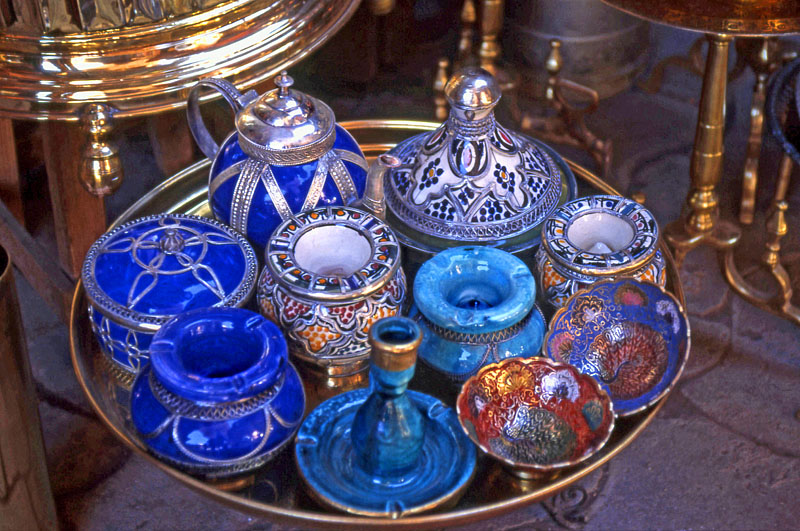
There are two ways to explore this city. The first is to go on a guided walking tour. I found it helped to get to know the main sights as well as tips on bargaining when shopping, and dealing with friendly but persistent vendors. And if you wish to photograph street entertainers, snake charmers, and water sellers etc, negotiating a fee before photographing is a must. Once I got my bearings, a second walking tour by myself, and at my own pace, was a delightful experience.
Fortune teller
Water sellers
Snake charmer
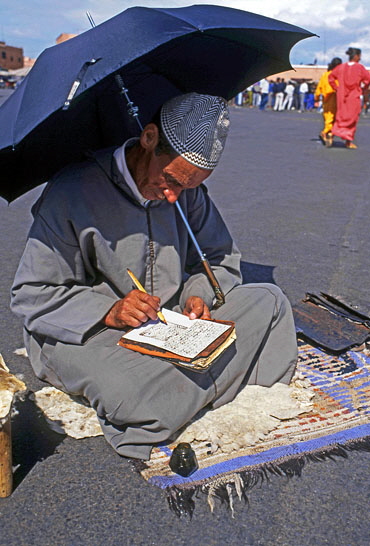
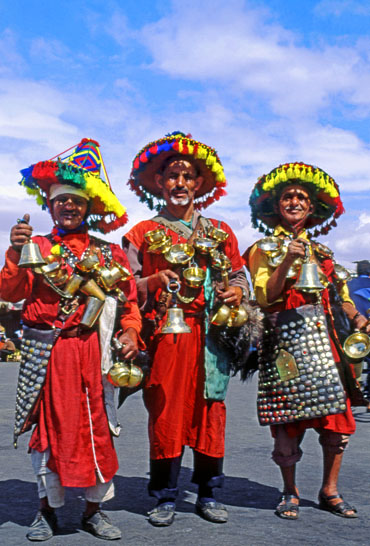
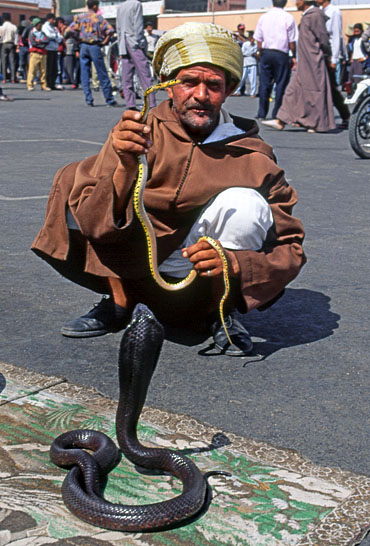
The number one attraction in the city is the Medina (old town). Enter it from Djemma el-fna Square, the huge crowded piazza. Locals and tourists merge here, and it’s a great place to people watch and take in the atmosphere. Snake charmers, fortune tellers, acrobats, musicians and traditional water sellers, all vie for attention and cash from visitors who want to photograph them. Water sellers were once traders in the desert areas, who carried water for sale in goatskin-lined bags. Although they still do sell water, today dressed in colourful attire they have become more of a tourist attraction. Do be cautious of people with snakes and cute monkeys who approach you and try to put the animal on your shoulder, then demand money for photos.
From Djemma el-fna Square, you enter the Medina, a vast labyrinth of narrow streets and a tangle of alleyways packed end to end with small shops and noisy shopkeepers competing for your custom. Within the Medina is also a souk, selling colourful ceramicware, copperware, woollen carpets, antiques, old musical instruments, spice shops, unusual items like giant iron locks, and more. Step into an alley or small courtyard and you can see people hanging out to dry, wool and fabrics dyed in bright colours. This is a centuries-old art of fabric dyeing, some still using natural colours extracted from plants.
Getting lost in the souk is easy, and Google Maps are not really useful. I simply had to ask someone for directions to get back to Djemma el-fna Square. But losing my way didn’t bother me, as there was so much to see and observe, amid the scents and sounds is alluring. One could spend hours meandering and browsing. It can
also overwhelm some.
Medina (old town)
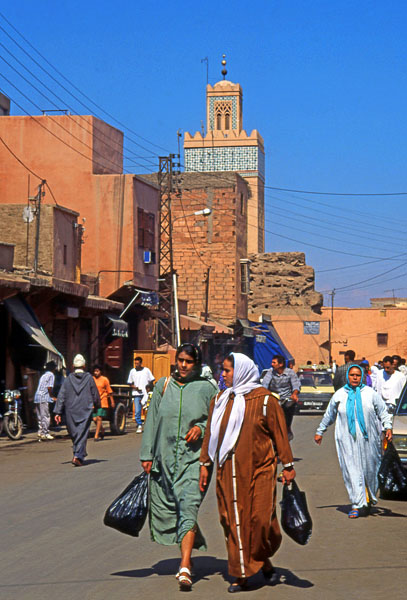
Medina Souk
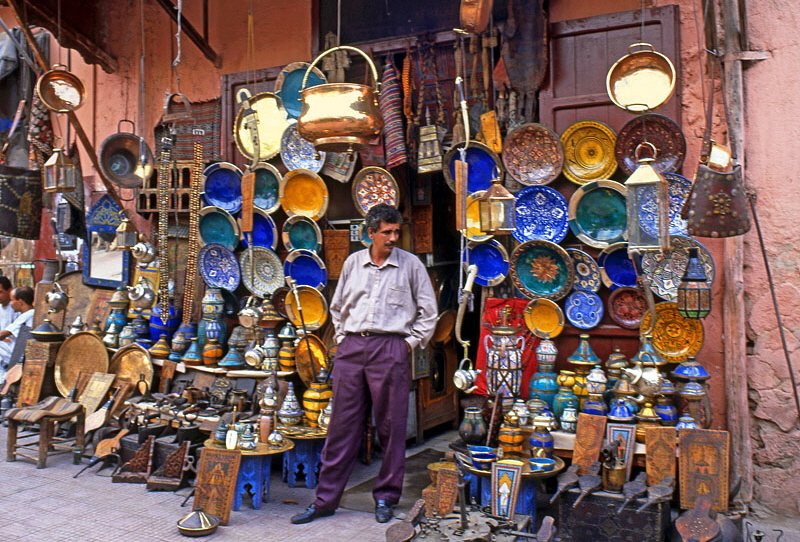
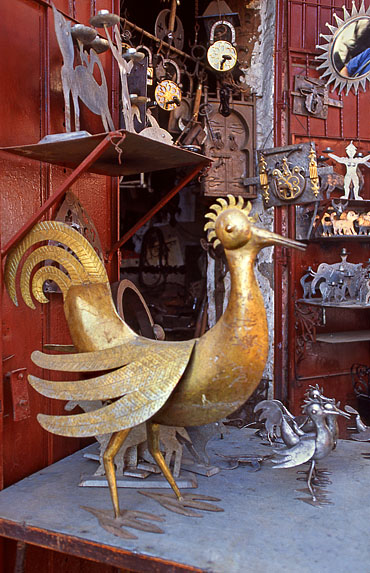
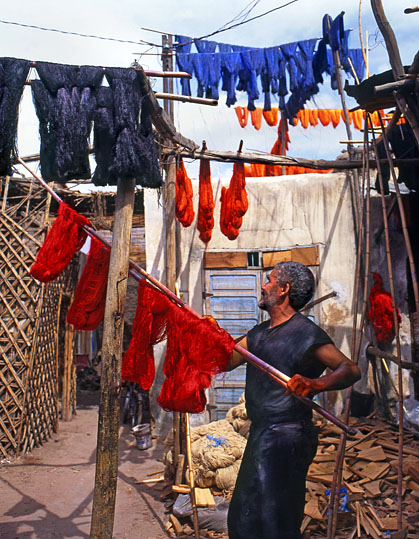
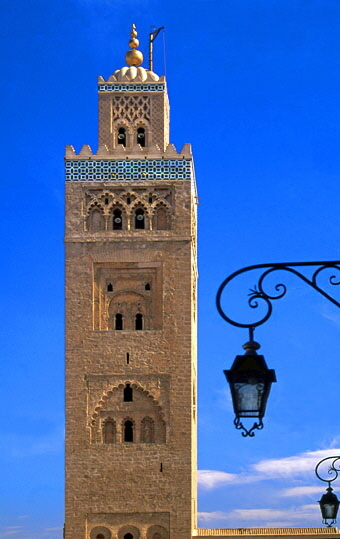
Medina Souk
Medina Souk, fabric dyeing
Koutoubia Minaret
If the midday heat and dust exhaust you, then a comfortable tour by Caleche might be an option. Tours vary from 30 minutes to one hour and can be expensive. I discovered that one of the horse-drawn carriage rides makes a brief stop at Majorelle Gardens. However, getting there by myself meant I was able to spend a good hour leisurely enjoying it in the cool shade. Away from the crowds and souks, this little garden is a quiet retreat, filled with temperate and tropical plants and flora. Carefully designed by French artist Jacques Majorelle, it’s a stunning twelve acre horticultural masterpiece. Plants of all kinds from palm trees to ferns, bamboo, cacti, and potted flora amid lily ponds are on show. The paths are complimented by large deep blue ceramic pottery, fountains, and ornamental walls that enhance the beauty of the place.
Majorelle Gardens
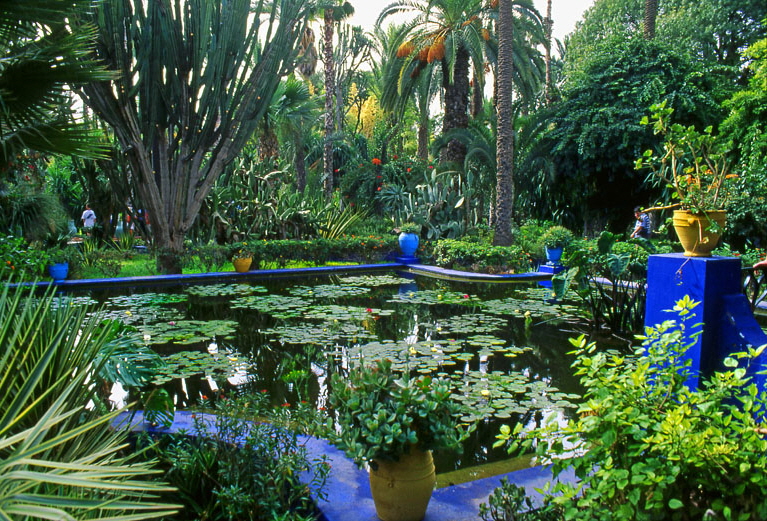
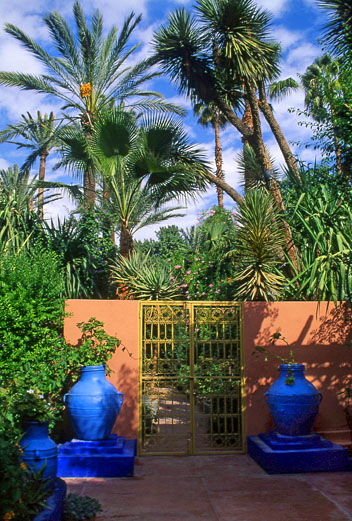
Manara Gardens takes a much larger area and is a public park. It’s a favourite escape from the busy city traffic and noise, and where local families gather to relax in peace and quiet. The major attraction here is the huge 19th-century lake around which the gardens of palm trees and olive groves are planted and landscaped.
Manara Gardens

One of the finest Moorish architectural beauties is the Bahia Palace. Built around 1860 by Si Moussa, chamberlain of Sultan Hassan I, it was proclaimed to be the finest palace of its time. Today it is among Marrakech’s most popular attractions. Tastefully designed, the exterior of the buildings are covered in blue yellow and white colours, and mosaic floors. Inside is a treat of marble floors, Zellij tile work, exquisite cedar wood ceilings, and doors inlaid with decorative art. With lovely courtyards and gardens with lush plants, the whole complex is simply a delight to explore.
Bahia Palace
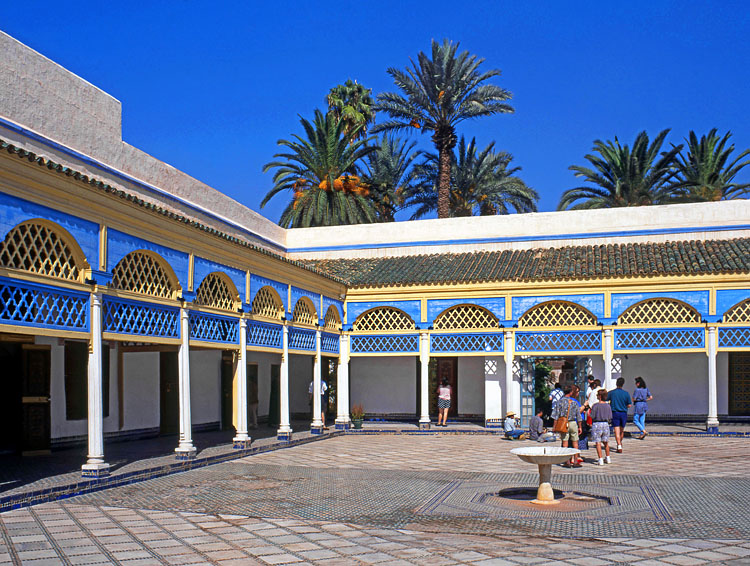

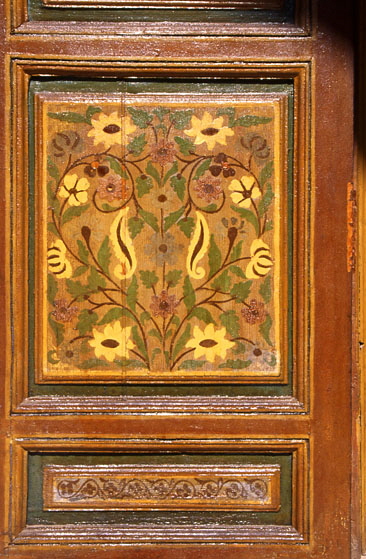
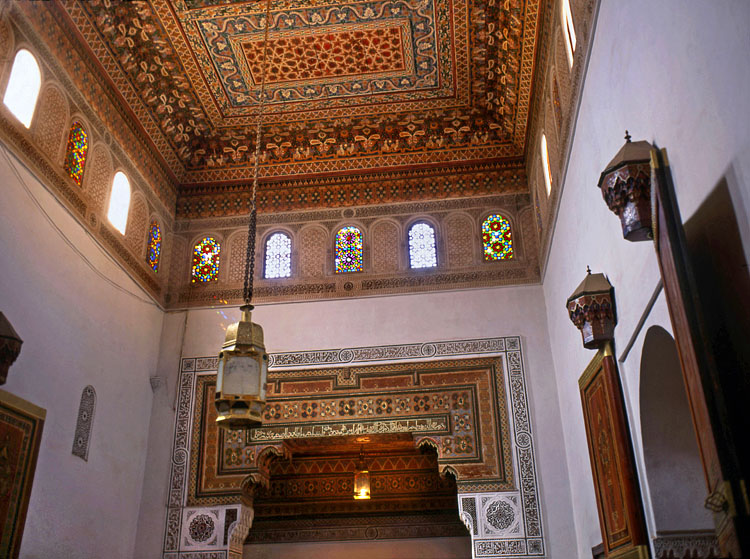
Bahia Palace
For more architectural artistry, a visit to the Medersa Ben Youssef is compulsive viewing. This theological college dates back to the 16th century and was the country’s largest centre for Quranic studies.
I did not have time to see much of the interior, yet just walking around the balconies, corridors, and the large courtyard surrounded by sumptuous Islamic architecture was just dazzling. Taking a closer look, one cannot but be amazed at the masses of fine zellij tile work, mosaics, and cedarwood carvings.
One distinctive structure seen from almost anywhere in the city is the Koutoubia Minaret. Part of the 12th century mosque, and around 77 metre tall, the ornate design and mosaic tile work is one of the most
beautiful minarets I’ve seen.

Medersa Ben Youssef
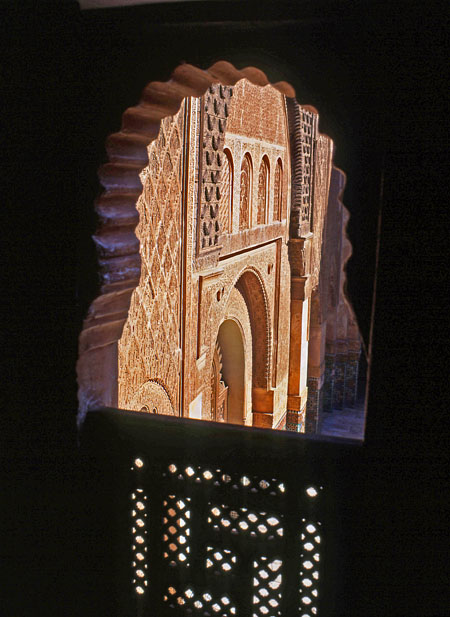
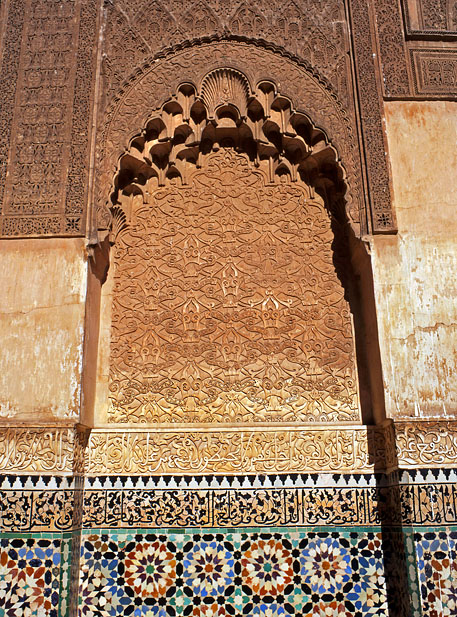
Intricate architecture, Medersa Ben Youssef
After five days of great sightseeing, it was time to head on a three hour drive to the coastal resort of Agadir. The drive itself is fascinating, passing small compact little villages, strewn along the arid landscape.
Claiming to have 300 sunny days a year, Agadir is a fully developed resort, with all the facilities and comforts for a beach holiday. The wide sandy shores are a paradise for sunbathers, watersports enthusiasts and the seaside restaurants offer plenty of Mediterranean and Moroccan gastronomy. However, for me, Agadir was the base from which to tour the Atlas Mountain region. For this, I joined a couple of guided small group tours.
Scenic road to Agadir
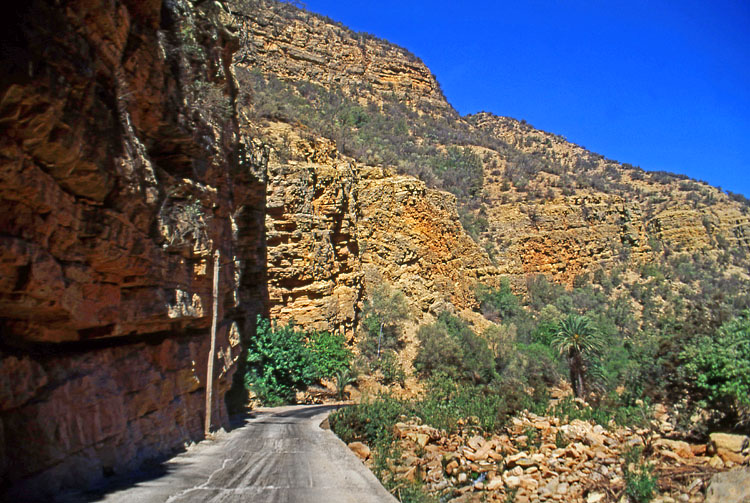
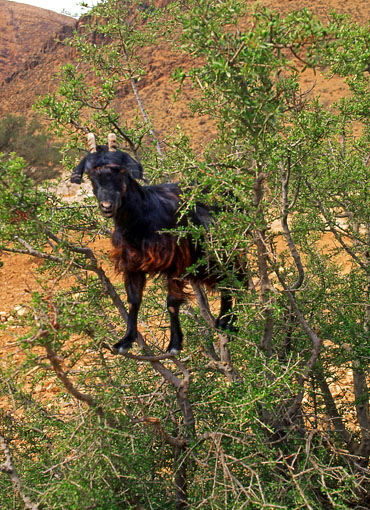
Tree climbing goats
South of Agadir, Souss Valley at the base of the Anti-Atlas mountains is typical rural Moroccan terrain. The scenery is exotic, with tiny reddish mud-built Berber villages and souks (a stop to buy Berber jewellery), date palm plantations, and orange groves. One of the unusual sights driving along the countryside is the ‘tree climbing goats’. Unique to Morocco, Argan trees are found mostly in Souss Valley. They bear fruit which attracts the goats in the vicinity to climb up the branches and eat them. It’s also a tourist attraction, with people having their selfies taken with the goats on trees.
Souss Valley
Date Palm plantation
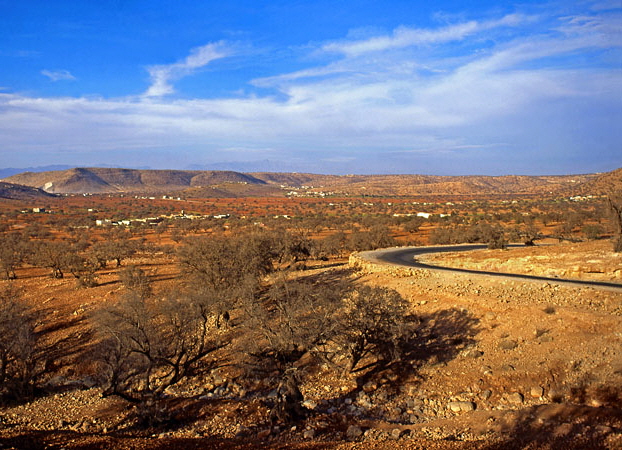
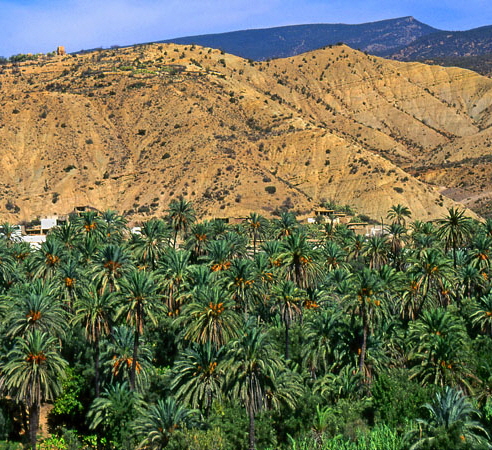
The ancient town of Tafraoute is a typical Berber town. The Berbers meaning ‘free people’ are indigenous and once nomadics of north Africa and the Sahara. In Tafraoute they’ve managed to preserves much of their culture and lifestyle for centuries. The town is scenically placed with a backdrop of red-rock formations reaching up like a tall mountain peak.
Once a hidden treasure, in recent years it attracts more and more visitors. It’s a pleasure to walk around the peaceful town square, encompassed by pretty pink, red and ochre colour clay-built houses. There was enough time to wander around the small souk, where Berber men attired in their traditional cloth turbans and ankle length tunics had set up stalls. Villagers from around other rural parts also bring their fruit and vegetables, wheat, barley, and other grains to sell. The people seem genuinely pleased to welcome you, and you don’t get pestered by over-enthusiastic shopkeepers and faux guides.
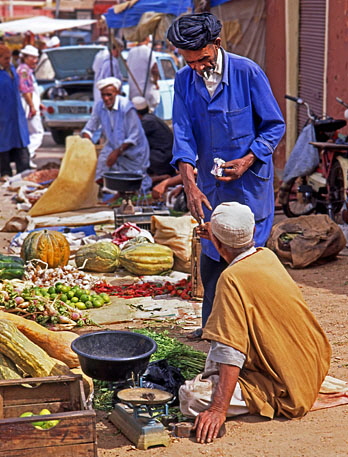
Tafraoute
Tafraoute souk
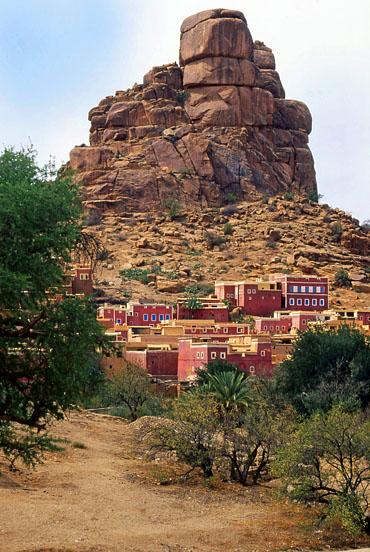
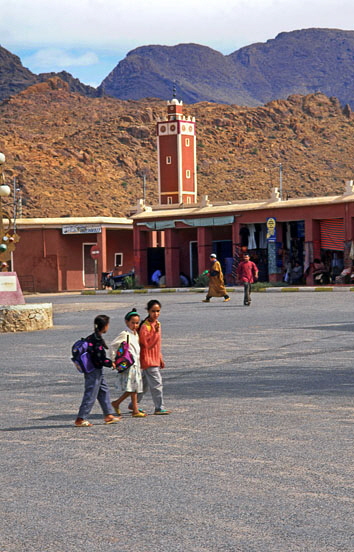
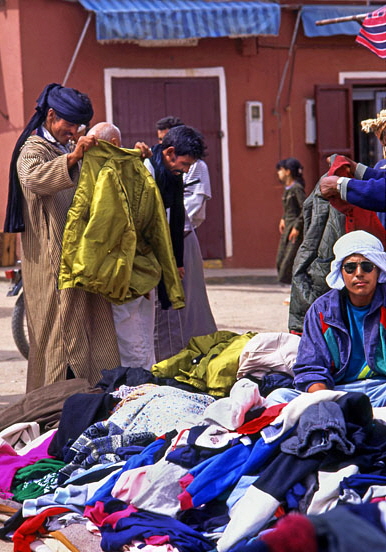
The slow drive to the High Atlas Mountain is spectacular, stopping several times for photos, as well as pausing to give way to wandering mules along the middle of the road. One striking scene was spotting a kasbah perched on a hilltop making it a lovely photo opportunity. Here, the joy of finding ‘oases in the desert’ is part of the trip. We stopped at two. Amid the desert-like scenery these beautiful oases are tightly filled with bright green vegetation, palm trees, and water holes.
Atlas Mountains, Kasbah
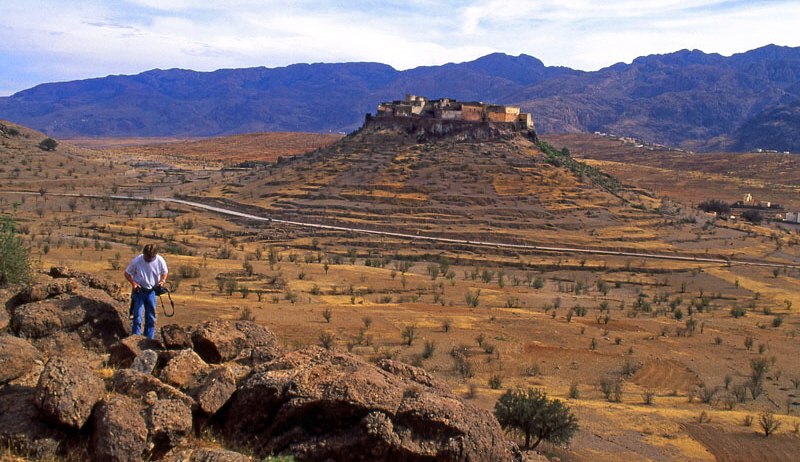
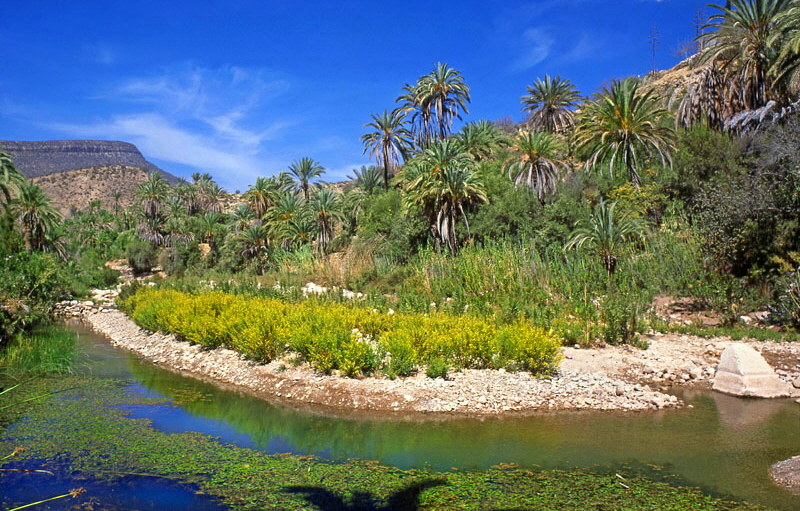
High Atlas Mountains, Oasis
In the town of Imouzzer, the guide had organised the mule trekking trip across mountain paths. However, the idea of ‘beasts of burden’ being used especially for the pleasure of tourists did not appeal to me. Instead, I was happy to walk along with the trekking group. And I was in my element hiking past little hamlets, and diverse vistas of farmed land, woodland paths and mountain scenery.
High Atlas Mountains scenery
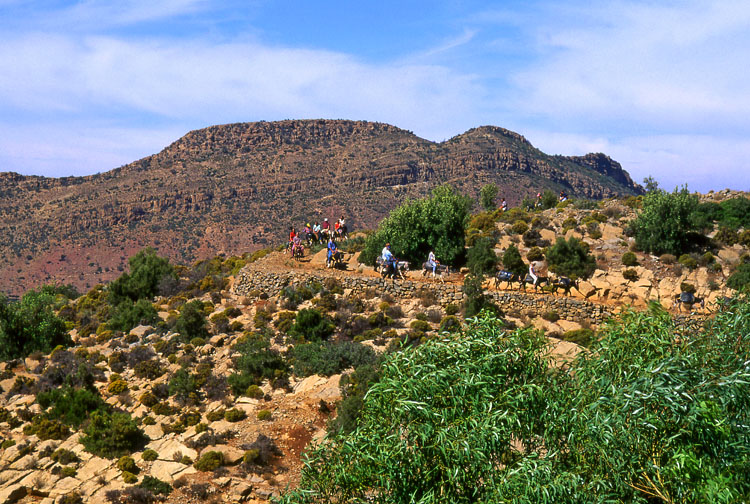
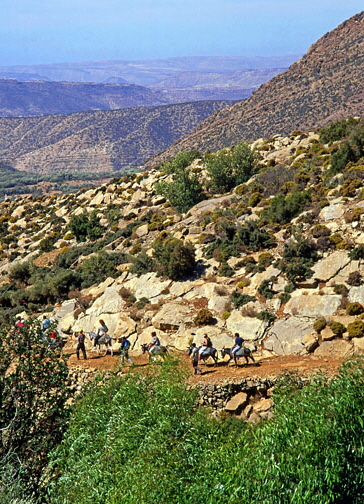
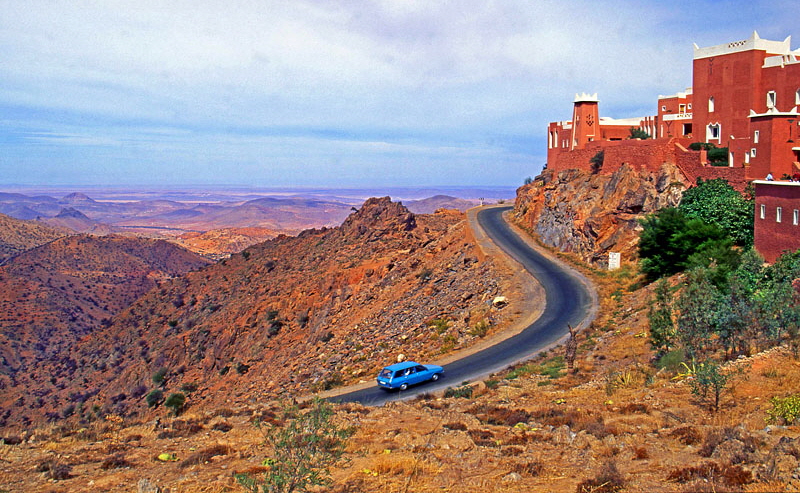
High Atlas Mountains scenery
Back in Agadir for the last couple of days, I did succumb to just laze by the seaside and strolling along the beachside promenade. In-between, it was indulging in some typical spicy Moroccan cuisine with mint tea. The beach was most attractive in the early evening when it got cooler. Watching local families, from grand parents to grand children who also came to paddle, enjoy the sea, and watch the sun go down, stamped a lasting image to a very enjoyable holiday.
22 images here ©JAYTRAVELPHOTOS
© COPYRIGHT notice. The images on this site are for viewing only.
To purchase any, for personal or commercial use, please contact us at jaytravelphotos@aol.com
